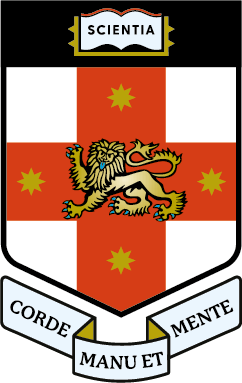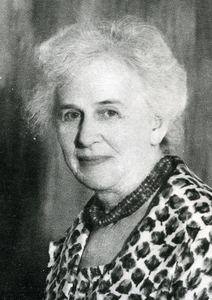
The University of New South Wales (UNSW), also known as UNSW Sydney, is a public research university based in Sydney, New South Wales, Australia. It is one of the founding members of Group of Eight, a coalition of Australian research-intensive universities. It is ranked 19th in the world in the 2024 QS World University Rankings.

The University of Wollongong (UOW) is an Australian public research university located in the coastal city of Wollongong, New South Wales, approximately 80 kilometres (50 mi) south of Sydney. As of 2023, the university had an enrolment of more than 33,000 students, an alumni base of more than 176,000 [LC1] and over 2,400 staff members including 16 Distinguished professors.

This is a list of halls of residence on the various campuses of the University of Nottingham in Nottingham, England.

The Women's College is a residential college within the University of Sydney, in the suburb of Camperdown, Sydney, New South Wales, Australia. It was opened in 1892.

Basser College, University of New South Wales is a residential college at the University of New South Wales in Sydney. Basser College and its two neighbouring Colleges, Goldstein and Phillip Baxter, are collectively known as the Kensington Colleges.

New College, University of New South Wales is a residential college, located in the UNSW campus in Sydney. The college is organised around on Anglican principles. About 250 undergraduate students, both local and international and of a variety of backgrounds, live in the original college building, and 315 graduate students are housed in the nearby New College Village. New College is also home to the Centre for Christian Apologetics, Scholarship and Education (CASE) which specialises in Christian apologetics.

Philip Baxter College, University of New South Wales is a residential college at the University of New South Wales in Kensington, Sydney, Australia. Phillip Baxter College and its two neighbouring Colleges, Goldstein and Basser, are collectively known as the Kensington Colleges. Philip Baxter college is the largest of The Kensington Colleges. Residents generally stay in Baxter for two or three years before ending their college tenure. A student had to remain at College for two and a half years, to be named Honorary College Valedictorian. Residents are provided with three meals per day during session at the nearby Goldstein Dining Hall, which is shared with residents of the other Kensington Colleges - Basser, Goldstein and Fig Tree Hall.

Warrane College UNSW is an affiliated residential college at the University of New South Wales, Australia. The name of the college is derived from the Aboriginal word for the Sydney Cove area, "Warrang", highlighting the recognition by Warrane and UNSW of Australia's indigenous people as original inhabitants of the land on which they are located. In 2021, Warrane celebrated 50 years since its official opening.
Campus Bible Study was established in 1975 at the University of New South Wales by the then Anglican chaplain Phillip Jensen. CBS celebrated its 40th anniversary in 2015, and continues to officially operate out of UNSW's Anglican Chaplaincy. The current Anglican Chaplain is Carl Matthei.

Sir John Philip Baxter was a British chemical engineer. He was the second director of the University of New South Wales from 1953, continuing as vice-chancellor when the position's title was changed in 1955. Under his administration, the university grew from its technical college roots into the "fastest growing and most rapidly diversifying tertiary institution in Australia". Philip Baxter College is named in his honour.
Bill Lucas was an Australian architect known well for the houses he designed along the Bulwark in Castlecrag, Sydney. While practicing as a full-time architect, Lucas also worked as a part-time lecturer at the School of Architecture of the University of New South Wales for a decade.
UNSW Foundation Studies provides foundation courses to assist students in meeting tertiary admission requirements and preparing for university entry. It is based at the University of New South Wales (UNSW) campus in Kensington, a suburb of Sydney. The UNSW Foundation Studies program commenced in 1989 and is the longest running foundation studies program in Australia.
Colombo House is a residential college at the University of New South Wales' Kensington campus. Colombo House admitted its first residents in 2014, following a redevelopment of the university's Kensington Colleges.

UNSW Hall is a residential college that is a part of University of New South Wales' student accommodation portfolio, founded in 2014.

Ellice Maud Nosworthy was an Australian practising architect for approximately 50 years and graduated as one of Australia's first female architects in 1922.

Bruce Hall is a residential college of the Australian National University (ANU), in Canberra, Australia. Opened in 1961, the original Bruce Hall was a campus landmark and housed both the first undergraduate hall of residence at the university and the first in Australia to admit both men and women. The college has produced notable alumni across a range of fields.

Cammeraygal High School is a government-funded co-educational comprehensive secondary day school, located on the Pacific Highway, Crows Nest, a suburb on the lower north shore of Sydney, New South Wales, Australia.

Tocal College is a heritage-listed agricultural college at 815 Tocal Road, Tocal, City of Maitland, New South Wales, Australia. It was designed by Philip Cox and Ian McKay and built from 1963 to 1965. It was formerly known as C.B. Alexander Campus or C.B. Alexander Presbyterian Agricultural College. The property is owned by the C. B. Alexander Foundation. It was added to the New South Wales State Heritage Register on 17 April 2013. The college is now known as the Tocal Agricultural Centre, a Centre of Excellence within NSW Department of Primary Industries.

The Women's College building is the heritage-listed building of The Women's College. a residential college for women students at the University of Sydney, located at 15 Carillon Avenue, Newtown, City of Sydney, New South Wales, Australia. It was designed by architects Sulman & Power and built from 1892 to 1924, with Bignell and Clark responsible for the initial construction. It was added to the New South Wales State Heritage Register on 1 April 2005.

Peter Brian Hall was an Australian architect active in Sydney and elsewhere from the 1950s to the early 1990s. Schooled in the tenets of modernism his practice was also informed by a strong sense of the importance of function and context in design. During his early years Hall was the recipient of numerous education scholarships and bursaries, most notably a traineeship and then employment with the office of the New South Wales Government Architect, a source of highly creative architecture during the 1960s. However, Hall is best known for completing the Sydney Opera House after the resignation of its original architect, Jørn Utzon, in February 1966. At the age of 34, he was invited by the Government Architect to act as design architect in the newly formed consortium Hall Todd & Littlemore to resolve the issues which had led to Utzon's resignation, principally the design of all the interiors and the enclosing glass walls of the unfinished building. The Opera House opened in October 1973 and despite its subsequent success as Sydney's most popular performance venue, understanding of the work of Hall and his team has been coloured by the controversial circumstances of their appointment. For Hall, both personally and professionally, Utzon's legacy was a poisoned chalice – an unprecedented challenge to complete the building to a standard commensurate with its sublime exterior, but one that brought little recognition during his lifetime.

















